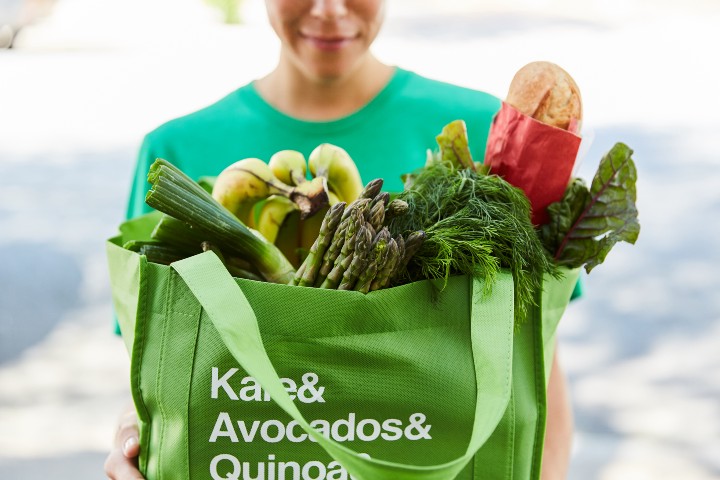The global food and grocery retail market was worth almost $11.9 trillion in 2024, and it’s likely to grow right along with the population in coming years. Food stocks represent shares in companies involved in the food industry that are listed on stock exchanges, which allows the investing public to buy and sell ownership in them.
Some analysts project the food industry could be worth $14.8 trillion by the start of the 2030s. It's a huge pie with a lot of slices, and there are plenty of companies competing for consumers’ food dollars.

Best food stocks to buy in 2025
The best food companies have strong brands that compel consumers to pay up for their products, and they also enjoy economies of scale that keep costs low. Pricing power and cost advantages are particularly important now, with inflation squeezing budgets and supply chain costs rising.
While there are many food stocks to choose from, not all of them belong in your portfolio. Here are a few that stand out as the best food stocks:
| Name and ticker | Market cap | Dividend yield | Industry |
|---|---|---|---|
| General Mills (NYSE:GIS) | $26.0 billion | 4.96% | Food Products |
| Tyson Foods (NYSE:TSN) | $18.3 billion | 3.81% | Food Products |
| Mondelez International (NASDAQ:MDLZ) | $81.3 billion | 3.04% | Food Products |
| PepsiCo (NASDAQ:PEP) | $210.1 billion | 3.62% | Beverages |
| Beyond Meat (NASDAQ:BYND) | $112.8 million | 0.00% | Food Products |
| Sprouts Farmers Market (NASDAQ:SFM) | $10.8 billion | 0.00% | Food and Staples Retailing |
1. General Mills

NYSE: GIS
Key Data Points

NYSE: TSN
Key Data Points
Meat products will likely continue to be a staple of U.S. diets. If you’re looking to invest in the meat industry, Tyson Foods (TSN -0.25%) is a reasonable choice, especially if you want to bet on the continued consumption of meat.
Tyson certainly doesn’t have the pricing power of a packaged food company with well-known brands, given that meat is largely a commodity. Meat processing in the U.S. is highly concentrated among a small number of companies, such as Tyson, owning a relatively small number of massive facilities. The company’s results are partly dictated by supply and demand for beef, pork, and chicken, with margins heavily influenced by pricing.
The meat industry is contending with factors like inflation that may lead consumers to choose cheaper cuts or reduce meat consumption. Tyson's beef business has been facing challenges, including a decline in the nation's cattle herds.
To address these challenges, Tyson Foods has announced the closure of several plants. The company is focusing on its diversified protein portfolio, including chicken, beef, and pork, to meet consumer demand. Tyson Foods is still reporting profits, and revenue is growing.
3. Mondelez International

NASDAQ: MDLZ
Key Data Points

NASDAQ: PEP
Key Data Points
Food industry sectors to watch
While General Mills, Tyson Foods, Mondelez International, and PepsiCo are great overall picks in the food industry, companies in more specialized sectors are worth a look as well. Here are a few categories to consider.
Plant-based food stocks
U.S. consumers already derive the majority of their calories from plant-based sources, and the companies above offer plenty of plant-based options. A big trend in recent years has been plant-based foods made to look and taste like meat and other animal-based foods.

NASDAQ: BYND
Key Data Points
Grocery store stocks
For the most part, grocery stores have a limited ability to pass off higher costs to consumers. Inflation may put some pressure on the grocery industry's profits, but that’s not a reason to avoid the industry entirely.

NASDAQ: SFM
Key Data Points
Pros and cons of investing in food stocks
As a consumer staple, food is always in demand, which tends to make it a defensive sector that performs well during market downturns. Here are some other pros to consider if you are thinking about investing in food stocks:
- Reliable dividends: Many established food companies generate stable earnings and cash flow, which they often return to investors in the form of reliable dividends. This can provide a steady income stream for investors focused on building long-term wealth.
- Inflation hedge: Companies with strong brand loyalty and pricing power can pass on rising costs to consumers through price increases. This helps protect their profitability during periods of inflation.
- Familiarity and accessibility: Many food stocks represent brands that investors use and trust in their daily lives, and this familiarity can be a great starting point for those new to the market.
As with any stock or stock sector, there are always cons that you should factor into the picture before you hit the buy button. A few downsides to consider include:
- Slow growth: Compared to high-growth sectors like technology, the food industry tends to deliver slower, more modest growth. This can result in less dramatic stock price movements and limited upside potential.
- Low profit margins: The food industry is known for its modest net income margins, which can make companies particularly sensitive to supply chain disruptions and input costs.
- Sensitivity to external factors: Food stocks are vulnerable to a variety of external risks, including geopolitical strife, disease outbreaks, and weather events.
- Changing consumer preferences: Public tastes can shift rapidly toward healthier, more responsibly sourced, or trendy food options. Companies that fail to innovate and adapt can underperform as a result.
Related investing topics
How to invest in food stocks
If you want to invest in food stocks, you can follow the same investment process you would for buying shares of any other publicly traded company. Here's what you need to know.
- Open your brokerage app: Log in to your brokerage account where you handle your investments.
- Search for the stock: Enter the ticker or company name into the search bar to bring up the stock's trading page.
- Decide how many shares to buy: Consider your investment goals and how much of your portfolio you want to allocate to this stock.
- Select order type: Choose between a market order to buy at the current price or a limit order to specify the maximum price you're willing to pay.
- Submit your order: Confirm the details and submit your buy order.
- Review your purchase: Check your portfolio to ensure your order was filled as expected and adjust your investment strategy accordingly.





